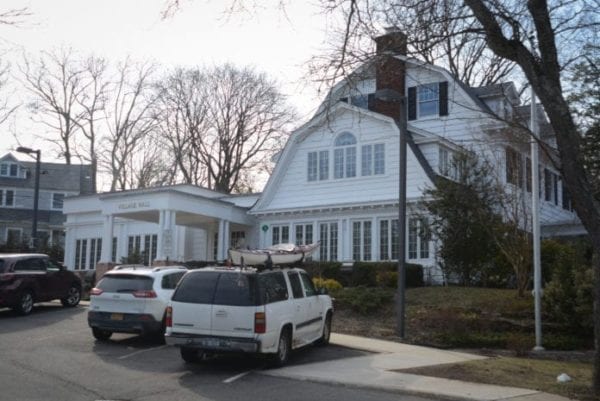
The Village of Great Neck Estates will continue a hearing on a proposed business overlay district and the First Playhouse project during a Jan. 12 board of trustees meeting.
The proposed local law would change the village’s business ‘D’ district to a pair of business overlay districts along Middle Neck Road.
The two incentive zoning districts would be located on the portions of Middle Neck Road both north and south of Cedar Drive and would decrease the number of residential units from what is permitted under the current zoning laws.
No more than one residential unit will be permitted for every 800 square feet of lot area in both proposed districts, officials said. In the proposed district north of Cedar Drive, the maximum height for a building is five stories or 55 feet, while the proposed district south of Cedar Drive would have a maximum building height of four stories or 45 feet. The current maximum height allowed in the business ‘D’ district is 2.5 stories or 25 feet.
Great Neck Estates Mayor William Warner said the village, in conjunction with BFJ Planning, has been working on developing the overlay district plan for more than a year in efforts to revitalize not just the village’s portion of Middle Neck Road, but the peninsula’s business district.
The report conducted by BFJ Planning and presented by Frank Fish, a founding principal at BFJ, estimated that approximately 143 residential units would be established in the next 10-15 years if the zoning proposal is adopted. Within those 143 residential units, Fish said, it is estimated that 29 school-age children would be accounted for.
John O’Keefe, assistant superintendent for the Great Neck School District, said BFJ’s report included data from the district that had not been finalized nor approved by board trustees as of Monday.
O’Keefe also said the district had only recently learned about the village’s proposed zoning law modifications but expressed a desire to work with Great Neck Estates officials to determine the most accurate impact on what the proposal would mean for Great Neck’s schools.
One resident expressed concerns with the projected influx of school-age children, citing overcrowded classrooms at Saddle Rock Elementary School. Having Great Neck as a widely respected school district in the country, he said, will cause more of an influx of school-age children moving into multi-family dwelling units.
Fish said that the data analyzed from thousands of multi-family units on Long Island and in parts of New York State shows that a majority of tenants in those buildings are either singles, empty-nesters and younger couples who may or may not have a child old enough to attend schooling.
Warner said developers have been “chomping at the bit” to try and build in the village, but underscored the importance to have the right development done responsibly and that all stakeholder input is taken into consideration.
“We’re trying to do this in the most responsible way to make this happen and not have 15 projects go at once,” Warner said during the meeting. “It’s going to be a very slow-moving process that we want to be able to control.”
The village is also slated to discuss an application submitted by the First Playhouse of Great Neck Corp. to reduce the proposed five-story height of the building and “other minor conforming plan revisions.”
A 20-unit, 35-bedroom, mixed-use apartment complex is planned for the site of the historic playhouse that dated back to the 1920s.
In its heyday, the First Playhouse on Middle Neck Road showcased Broadway-bound plays and vaudeville acts starting in the mid-1920s, including the works of the Marx Brothers and F. Scott Fitzgerald. United Artists bought the theater in the 1930s, but it closed in 1983.
Both public hearings will take place at the village hall, 4 Atwater Plaza, on Jan. 12 at 8 p.m.






